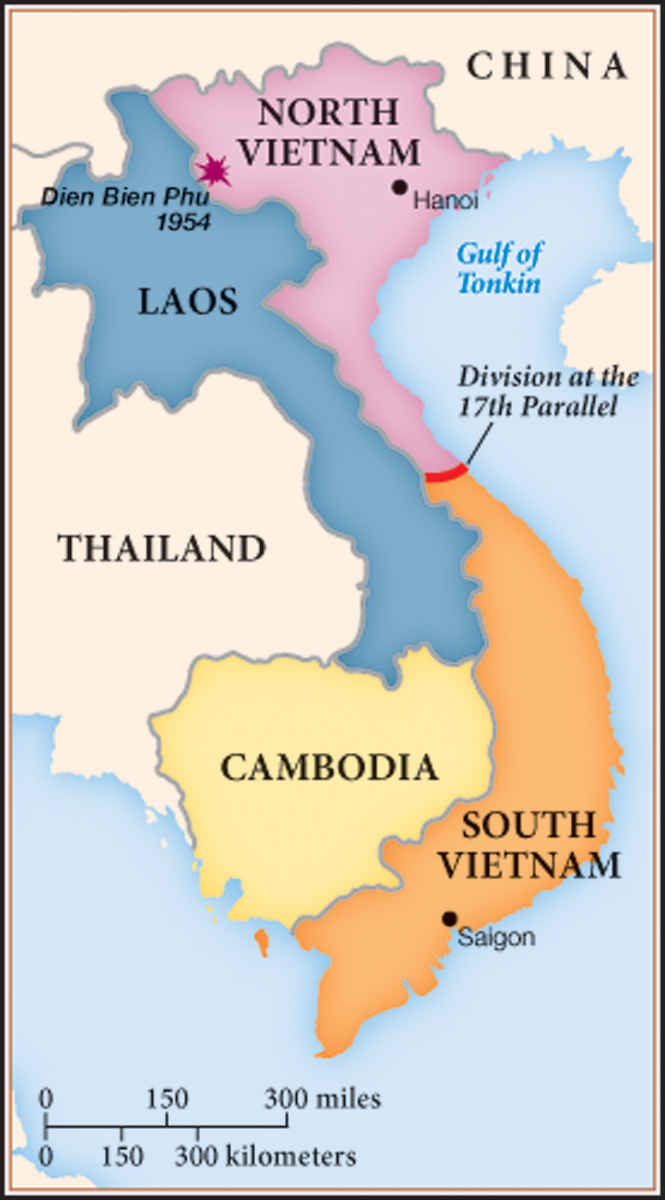The End of Empire in Asia
Printed Page 918
Important EventsThe End of Empire in Asia
At the end of World War II, leaders in Asia succeeded in mobilizing mass discontent to drive out foreign rulers. Declining from an imperial power to a small island nation, Britain was the biggest loser. In 1947, it parted with India, whose independence it had promised in the 1930s. Indian business leaders bought out British entrepreneurs short of cash, and armed with an effective military, Indians began to face off with the British in strikes and other protests. Britain quickly faced reality and decreed that two independent countries should emerge from the old colony. The partition of 1947 created India for Hindus and Pakistan (itself later divided into two parts) for Muslims, but political tensions exploded among opposing members of the two religions. Hundreds of thousands of people overall were massacred in the great shift of populations between India and Pakistan. In 1948, a radical Hindu assassinated Gandhi, who though a Hindu himself had continued to champion religious reconciliation. Elsewhere, as some half a billion Asians gained their independence, Britain’s sole remaining Asian colony of note was Hong Kong.

In 1949, after prolonged fighting, a Communist takeover in China brought in a government led by Mao Zedong (1893–1976). Chinese communism in the new People’s Republic of China emphasized above all that the country was no longer the plaything of the colonial powers as Mao instituted reforms such as civil equality for women and imposed Soviet-style collectivization and brutal repression of the privileged classes.
The United States and the Soviet Union were deeply interested in East Asia—the United States because of the region’s economic importance, and the USSR because of its shared borders. The victory of the Chinese Communists spurred both to increase their involvement in Asian politics. The superpowers faced off first in Korea, which had been split at the thirty-eighth parallel after World War II. In 1950, the North Koreans, with the support of the Soviet Union, invaded U.S.-backed South Korea, whose agents had themselves been stirring up tensions with raids across the border. The United States maneuvered the Security Council of the United Nations into approving a “police action” against the North. After two and a half years of a horribly destructive stalemate, the opposing sides finally agreed to a settlement in 1953: Korea would remain split at the thirty-eighth parallel. As a result of the Korean War, the United States increased its military spending from almost $11 billion in 1948 to almost $60 billion in 1953. An Asian counterpart to NATO, the U.S.-backed Southeast Asia Treaty Organization (SEATO), was established in 1954. Another effect of the Korean War was the rapid reindustrialization of Japan to provide the United States with supplies.

The cold war then spread to Indochina (now modern Cambodia, Laos, and Vietnam), where the European-educated Ho Chi Minh (1890–1969) had built a powerful organization, the Viet Minh, to fight colonial rule. He advocated the redistribution of land held by big landowners, who possessed more than 60 percent of the land. In 1954, Viet Minh peasant guerrillas ultimately defeated the technologically superior French army, which was receiving aid from the United States. Later that year, the Geneva Conference carved out an independent Laos and divided Vietnam along the seventeenth parallel into North and South, each free from French control. The Communist-backed Viet Minh, under Ho Chi Minh as president, ruled in the north, while the United States supported the landowner-backed regime in the south. Continued superpower intervention undermined the peace agreement as the superpowers fought the cold war in small foreign nations—conflicts now referred to as proxy wars.